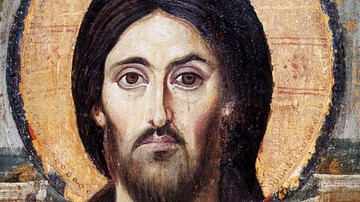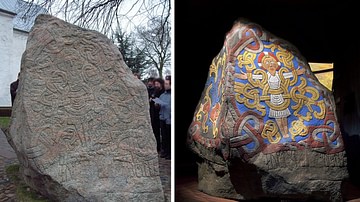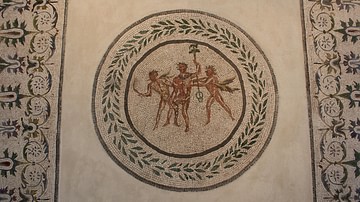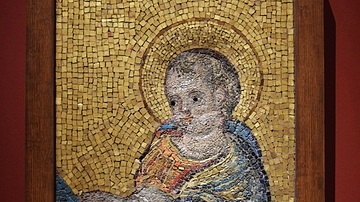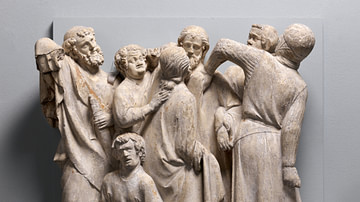Illustration
This is the central roundel of a 4th century CE mosaic floor from a villa at Hinton St. Mary, Dorset. It is one of the most important early Christian remains from the Roman Empire. The roundel is probably the earliest known mosaic picture of Christ. It is the focal point of the main floor in the position usually occupied by a figure of a pagan god or goddess. However, the Greek letters X and P (chi and rho) behind the head indicate that the person is probably Christ. They are the first two letters of the word Christ in Greek and the usual symbol of early Christianity. At either side are pomegranates, signalling immortality. Discovered and excavated between 1963-1964 CE. The full mosaic measures 8.1 by 5.2 metres. (The British Museum, London)
About the Author
Cite This Work
APA Style
Amin, O. S. M. (2016, April 20). Mosaic Floor from a Villa at Hinton St. Mary. World History Encyclopedia. Retrieved from https://www.worldhistory.org/image/4971/mosaic-floor-from-a-villa-at-hinton-st-mary/
Chicago Style
Amin, Osama Shukir Muhammed. "Mosaic Floor from a Villa at Hinton St. Mary." World History Encyclopedia. Last modified April 20, 2016. https://www.worldhistory.org/image/4971/mosaic-floor-from-a-villa-at-hinton-st-mary/.
MLA Style
Amin, Osama Shukir Muhammed. "Mosaic Floor from a Villa at Hinton St. Mary." World History Encyclopedia. World History Encyclopedia, 20 Apr 2016. Web. 28 Mar 2025.



